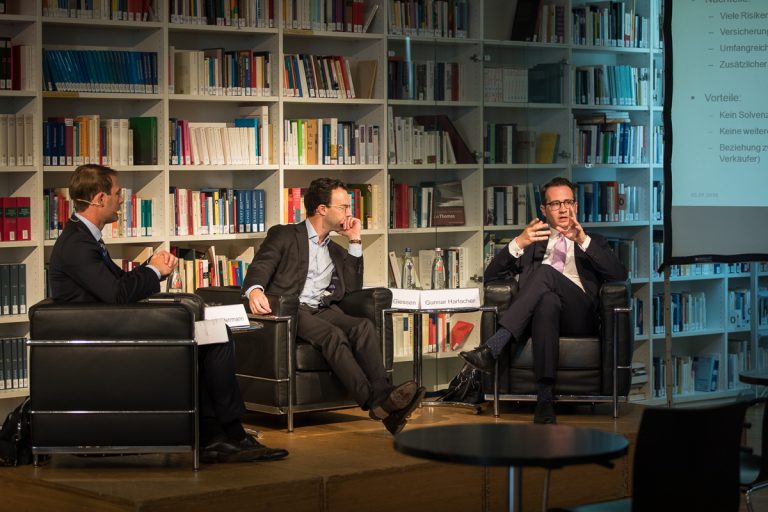
Due to the currently strong position of sellers of companies in the market, the maximum liability amount (CAP) within the framework of guarantees and indemnities is increasingly being significantly reduced. Often the buyer even has to accept a CAP of only 1 Euro. In practice, this leads to a high risk for the buyer, which is increasingly compensated by the conclusion of so-called Warranty & Indemnity insurances (W&I insurances).
As part of the Munich Private Equity Training 2019 (MUPET 2019) in Munich, Gerald Herrmann (P+P Pöllath + Partners) had the opportunity to discuss these developments and the advantages and disadvantages of W&I insurances with broker Dr Philipp Giessen of Marsh GmbH and Gunnar Harlacher of insurance company AIG.
W&I insurances have been available on the German market since around 2011. In recent years, the number of such insurance policies has increased considerably, according to Giessen. The advantages for both parties are considerable. In all cases in which a guarantee or exemption from the company purchase contract applies, the buyer can make direct use of the insurance without being limited to a maximum liability amount agreed with the seller. In addition, he no longer bears the seller’s insolvency risk but knows that he has a financially strong insurance policy behind him. On the other hand, the seller does not have to fear that the buyer will make a claim years later and thus be exposed to a liquidity disadvantage.
Nevertheless, insurers also face considerable criticism. In particular, the high number of uninsurable tax risks leads to a low scope of application and liability gaps. For example, only those risks are covered which are not known after a comprehensive tax due diligence, i.e. all risks discovered in the due diligence are not protected. In addition, further exclusions, such as VAT or transfer pricing, are often made. Harlacher emphasises that the scope of insurance may well expand in the future. This is due to many new insurers on the German market and the associated competitive situation. Should sellers again be liable with a substantial value in the future, this could also lead to fewer exclusions.
The currently existing liability gaps can be partially covered with special insurances. Such insurances each cover a specific risk and can also be taken out for already known risks. The prerequisite for this is in particular that it is a legal risk and that the insurance company does not classify the probability of loss occurrence as high. The amount of the insurance premium usually amounts to 2-7 percent of the sum insured, depending on the individual case.
It is therefore always necessary to check individually for each transaction whether a W&I insurance and/or a special insurance is suitable and necessary. It is also worth comparing the different insurance companies with the respective premiums and scope of insurance.
According to Giessen, it is not possible to predict whether the conclusion of W&I insurance policies will also develop positively in the coming years. If the position of the buyers were to strengthen and the liability limits be noticeably raised again, insurance policies would probably no longer be in as much demand from the buyer’s point of view to the same extent as is currently the case. At the same time, policies for sellers would then again come more into consideration. In Great Britain, where this form of insurance has been known since the end of the 1990s, W&I insurances are still established on the market today despite various economic conditions. It remains to be seen whether a similar development will take place in Germany.
Read more:
Recent Developments in M&A Transactions with Private Equity Sponsors
